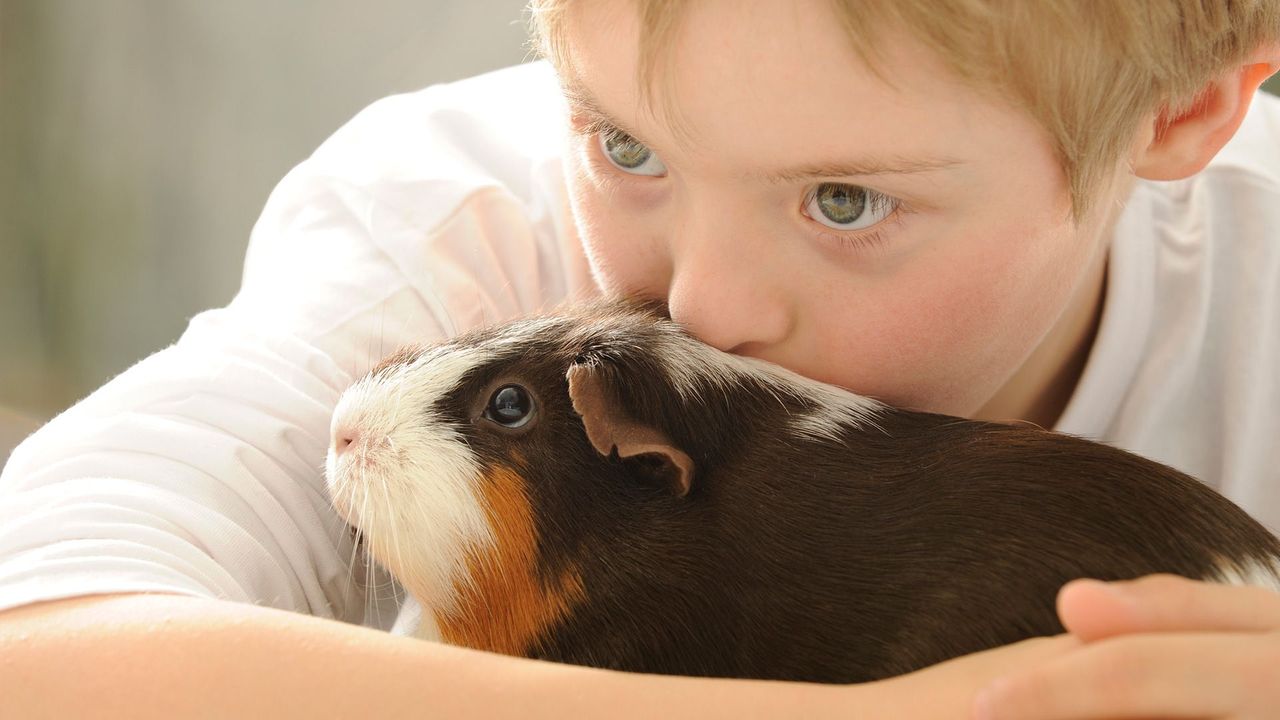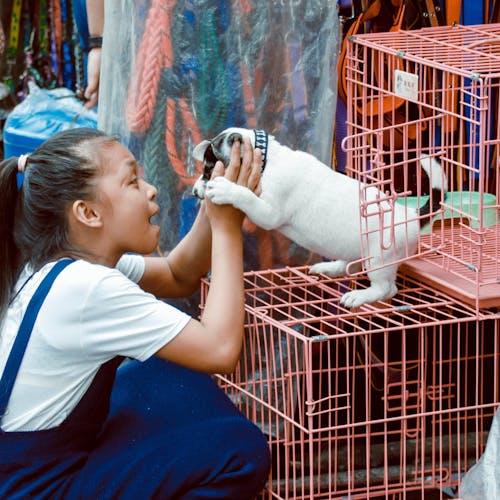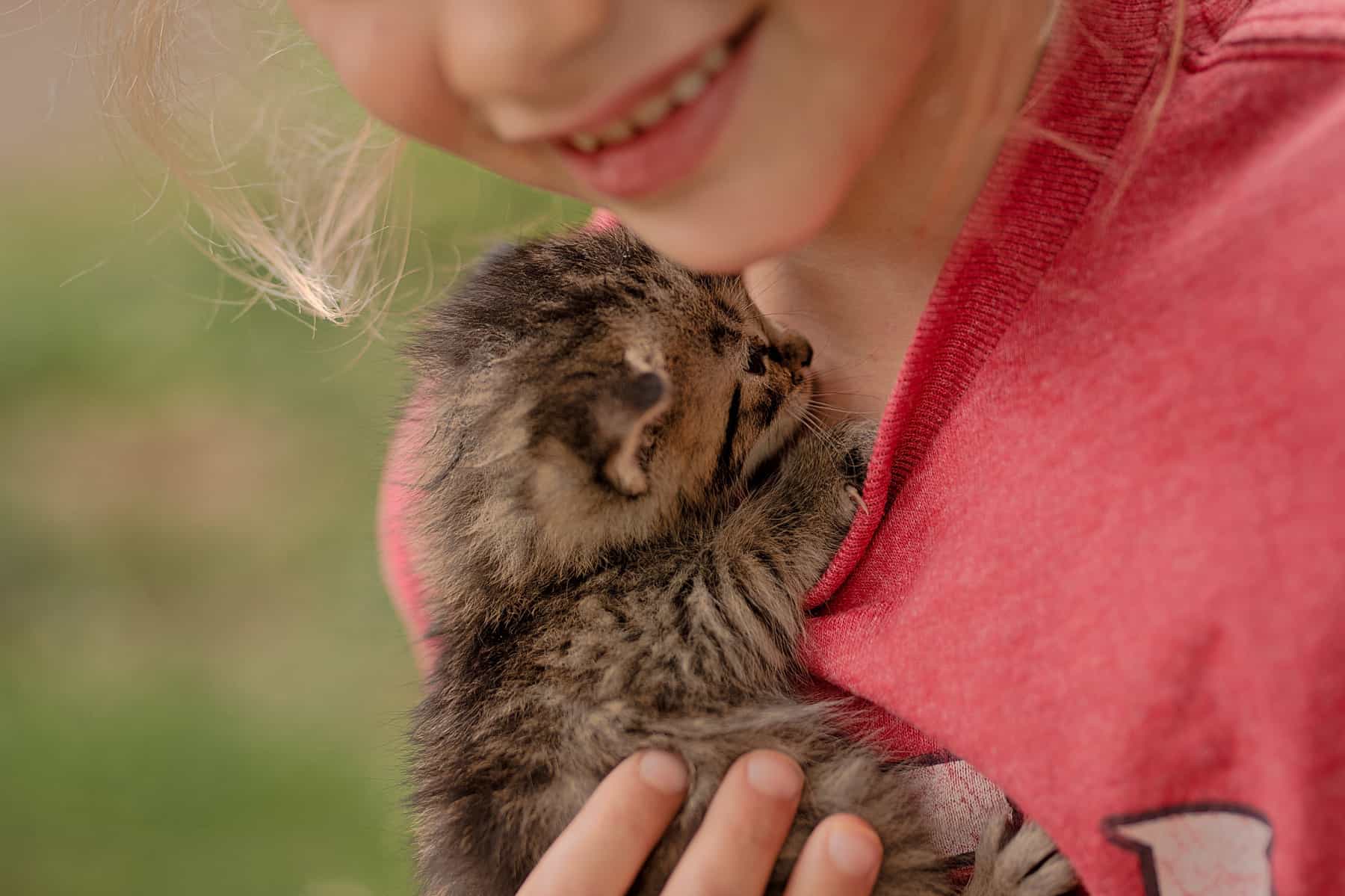If you’re thinking about adding a new furry family member, it’s important to consider how it will affect your current household. Whether you have children or other pets, there are specific things you should keep in mind to ensure a smooth transition for everyone involved. In this blog post, we’ll discuss some key considerations to keep in mind before adding a new member to your family.

1. Benefits of pets for children
Having a pet can bring numerous benefits for children, both physically and emotionally. Pets offer unique companionship and teach valuable life lessons such as responsibility, trust, compassion, respect, and patience. Regular interaction with pets can also improve a child’s impulse control, social skills, and self-esteem. In fact, research shows that children with pets tend to display more compassion, empathy, and care for others. Along with these social-emotional benefits, pets can also encourage physical activity in children. Overall, having a family pet can be a positive experience for children, but it is important for parents to be involved in their pet’s care and to consider factors such as safety and choosing the right pet for the family.
:max_bytes(150000):strip_icc()/GettyImages-1157828981-2000-f0eb88f71b9442bcb3de82ba5d778b50.jpg)
2. Importance of parental involvement in pet ownership
It is important for parents to be actively involved in the pet ownership process to ensure a positive experience for both the children and the animals. As mentioned earlier, pets can be wonderful teachers for children, but it is up to the parents to guide and reinforce those lessons. Before even getting a pet, parents should consider factors such as their living situation, lifestyle, and the needs of the specific animal to ensure that they are prepared for the responsibility. Once a pet is brought into the family, parents must ensure that the children are treating the animal with respect and kindness, and that they understand the importance of proper feeding, exercise, and grooming. It is important for parents to lead by example and help foster a strong bond between the children and their pet. By being involved in the process, parents can ensure that their family’s pet ownership experience is a positive and meaningful one.

3. Factors to consider before getting a family pet
When considering getting a family pet, it is important to take certain factors into account. One of the most important considerations is whether your lifestyle can accommodate the necessary care and attention your pet will need. It is important to be honest with yourself about whether you can commit to feeding, exercise, and playtime, as well as providing adequate indoor and outdoor space. Additionally, it is important to consider the temperament of the pet you are considering and whether it is suitable for your family and any other pets you may have. Choosing the right pet for your family can make all the difference in creating a positive experience for both the animal and your family. By taking the time to research and plan for pet ownership, you can ensure that it is a rewarding experience for all involved.

4. Endorsed reasons for having a family pet
Many parents endorse having family pets for a variety of reasons. In addition to the lessons children can learn from pets, such as responsibility and compassion, pets can also provide companionship and emotional support for both children and adults. Pets can be a source of stress relief and can help alleviate feelings of loneliness and depression. Furthermore, having a family pet can be a bonding experience that brings the family together and creates lasting memories. However, it is important to carefully consider factors such as allergies, living space, and financial responsibility before bringing a pet into the home. Ultimately, having a family pet can be a rewarding experience, but it requires commitment and responsibility from the entire family.

5. Life lessons children can learn from pets
Section 5: Life lessons children can learn from pets
Owning a pet can be an incredible way for children to learn valuable life lessons. For instance, pets can teach children about responsibility, as they’ll learn to feed, groom, and tend to their pet’s needs. Children with pets also tend to develop a sense of compassion and empathy, as they witness firsthand the impact of their actions on another living being. Moreover, pets can help children learn about relationships, as pets require communication, trust, and patience to build and maintain a bond. Additionally, pets can teach children about the circle of life, as they come to understand the cycle of birth, life, and death. Overall, having a pet can be an enriching and rewarding experience that can help children develop important skills and values that they can carry with them throughout their lives.

6. The social and emotional benefits of pet ownership
As discussed in previous sections, owning a pet can have numerous benefits for children and families. One of the most significant advantages is the social and emotional benefits that come with pet ownership. Research has shown that pets can boost a child’s self-esteem and confidence, providing companionship and friendship to children who feel like they have no one else to talk to. Owning a pet can also help children develop valuable life lessons like responsibility, compassion, and respect. Moreover, pets can reduce stress, anxiety, and alleviate depression and loneliness, making them the perfect companions for children and families. It is important to note that parental involvement plays a crucial role in nurturing a healthy relationship between children and pets. Parents should consider factors like safety, supervision, and guidance for child-animal relationships when selecting the right pet for their family. Nonetheless, shared pet ownership can create a common bond among siblings and strengthen family relationships, making it a worthwhile investment for families with children.

7. Safety considerations when children and animals interact
When it comes to the interaction between children and animals, safety should always be a top priority. Always supervise children closely when they are around pets, and teach them to be gentle and respectful towards them. Avoid any rough play or teasing, and discourage children from pulling on leashes or collars. Additionally, it’s important to carefully choose the right pet for your family, based on factors such as the age of your children, your living situation, and the temperament of the animal. Providing supervision and guidance when children and animals are together is crucial for both their safety and comfort, and can help foster positive relationships between them. By following these safety considerations, families can ensure that their children and pets can happily coexist in a safe and enjoyable environment.

8. Choosing the right pet for children
When it comes to selecting a pet for children, there are several factors to consider. These include the age of the child, the temperament of the animal, and the level of commitment required to care for it. Parents should involve their children in the decision-making process and consider their lifestyle, budget, and needs when choosing a pet. Small mammals like rabbits and guinea pigs can make excellent first-time pets for younger children with parental supervision, while older animals like cats and dogs may be better suited for older children who are ready for more responsibility. Ultimately, the right pet should be a balance between the child’s desires and the family’s ability to provide adequate care and supervision. With proper guidance and attention to safety, pets can offer many benefits to children, including companionship, responsibility, and valuable life lessons.

9. Supervision and guidance for child-animal relationships
Supervision and guidance are essential when it comes to child-animal relationships. Although the benefits of pet ownership for children are numerous, it’s crucial to remember that pets are living creatures that deserve respect and care. Parents must take responsibility for their child’s behavior and ensure that animals are treated kindly and safely. Teaching children how to behave around pets is a vital part of child development, and it also fosters a positive relationship between the child and the animal. Parents must supervise their child’s interactions with pets and intervene if necessary to ensure both child and animal are safe. Guidance on pet ownership should begin early on, and children must be taught the importance of caring for an animal’s needs. Pet ownership can foster a sense of responsibility in children that will serve them well throughout their lives.

10. Common bond forged by shared pet ownership among siblings.
Another significant benefit of pet ownership for families with children is the common bond forged among siblings. Sharing the care and love of a family pet creates a special connection that brings siblings closer together. Research has shown that children who grow up with pets have stronger sibling relationships and feel less lonely and isolated. Moreover, having a pet teaches children to compromise, work together, and be patient, which promotes positive social skills and helps maintain healthy relationships with others. Parents can encourage this bond by involving all family members in the pet’s care, such as feeding, grooming, and playing, and by giving each child a specific responsibility to keep them engaged in the process. Ultimately, shared pet ownership can help siblings build lifelong memories and a deeper understanding of responsibility, compassion, and empathy.
- From Babies To Adults: Navigating Hamster Development Milestones - April 14, 2024
- From Seeds To Treats: Unveiling The Secrets Of Hamster Diet And Behavior - April 14, 2024
- A Culinary Adventure: Discovering The Delightful Hamster Diet Variety - April 14, 2024